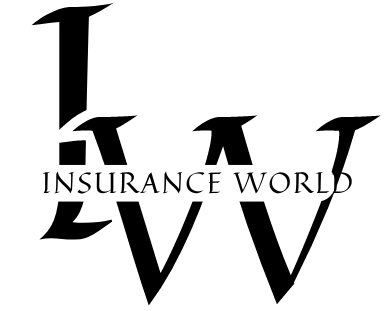Introduction: Life is full of uncertainties, and while we can’t predict the future, we can take steps to protect our loved ones and ensure their financial security. Life insurance serves as a vital tool in this endeavor, offering a safety net that provides financial support to beneficiaries in the event of the policyholder’s death. However, navigating the world of life insurance can be complex, with various types of policies and coverage options available. In this comprehensive guide, we’ll explore everything you need to know about life insurance, from understanding the basics to choosing the right coverage to suit your needs and goals.
- Understanding Life Insurance:
- Life insurance is a contract between an individual (the policyholder) and an insurance company, where the insurer agrees to pay a designated beneficiary a sum of money (the death benefit) upon the policyholder’s death.
- The primary purpose of life insurance is to provide financial protection and support to the policyholder’s beneficiaries, helping them cover expenses such as funeral costs, outstanding debts, mortgage payments, and ongoing living expenses.
- Life insurance policies come in various forms, including term life insurance, whole life insurance, universal life insurance, and variable life insurance, each offering different features, benefits, and premium structures.
- Types of Life Insurance Policies: a. Term Life Insurance:
- Term life insurance provides coverage for a specified period, typically 10, 20, or 30 years.It offers a death benefit to beneficiaries if the insured dies during the term of the policy.Term life insurance is generally more affordable than other types of life insurance but does not accumulate cash value.
- Whole life insurance provides coverage for the insured’s entire life, as long as premiums are paid.It offers a death benefit to beneficiaries and includes a cash value component that accumulates over time, earning interest at a fixed rate.Whole life insurance premiums are higher than term life insurance but provide lifelong coverage and a guaranteed death benefit.
- Universal life insurance offers flexibility in premium payments and death benefits, allowing policyholders to adjust their coverage and premiums over time.It includes a cash value component that earns interest at a variable rate, based on market performance.Universal life insurance provides lifetime coverage and allows policyholders to access the cash value for loans or withdrawals, subject to certain conditions.
- Variable life insurance combines death benefit protection with investment opportunities.
- Policyholders can allocate a portion of their premiums to investment accounts, such as stocks, bonds, or mutual funds, within the policy.
- The cash value and death benefit of variable life insurance fluctuate based on the performance of the underlying investments, offering the potential for higher returns but also greater risk.
- Benefits of Life Insurance:
- Financial Protection: Life insurance provides a financial safety net for loved ones, ensuring that they are provided for in the event of the policyholder’s death.
- Debt Repayment: Life insurance proceeds can be used to pay off outstanding debts, such as mortgages, car loans, and credit card balances, relieving financial burdens for beneficiaries.
- Income Replacement: Life insurance can replace lost income for dependents, helping them maintain their standard of living and cover essential expenses.
- Estate Planning: Life insurance can be used as a tool for estate planning, providing liquidity to pay estate taxes and ensuring the smooth transfer of assets to heirs.
- Factors Affecting Life Insurance Premiums:
- Age: Younger individuals typically pay lower premiums for life insurance coverage, as they are considered lower risk.
- Health: Medical underwriting is used to assess an individual’s health status and determine their insurability and premium rates.
- Lifestyle: Factors such as smoking, alcohol consumption, and participation in high-risk activities can impact life insurance premiums.
- Coverage Amount: The amount of coverage selected, or the death benefit, directly affects the cost of life insurance premiums.
- Policy Type: Different types of life insurance policies have varying premium structures, with term life insurance generally being the most affordable and whole life insurance being the most expensive.
- Choosing the Right Life Insurance Coverage:
- Assess Your Needs: Consider your financial obligations, income, debts, and long-term goals when determining the amount and type of life insurance coverage you need.
- Evaluate Policy Options: Compare quotes and policy features from multiple insurance companies to find the best coverage at the most affordable price.
- Consider Riders: Explore additional coverage options, known as riders, that can be added to your life insurance policy to customize coverage to your specific needs, such as accelerated death benefits, waiver of premium, or accidental death benefit riders.
- Review Policy Terms: Read the terms and conditions of your life insurance policy carefully to understand coverage limits, exclusions, premium payment options, and other important details.
- Revisit Coverage Periodically: Review your life insurance coverage periodically to ensure it remains adequate and up-to-date, especially after major life events such as marriage, divorce, the birth of a child, or changes in financial circumstances.
Conclusion:
Life insurance is a valuable tool for protecting your loved ones and ensuring their financial security in the event of your death. By understanding the basics of life insurance, exploring the different types of policies available, and choosing the right coverage to meet your needs and goals, you can provide peace of mind and support for your family’s future. Take the time to assess your life insurance needs, compare policy options, and select the coverage that offers the best value and protection for you and your loved ones. With the right life insurance in place, you can safeguard your legacy and provide for those who matter most to you, even after you’re gone.

